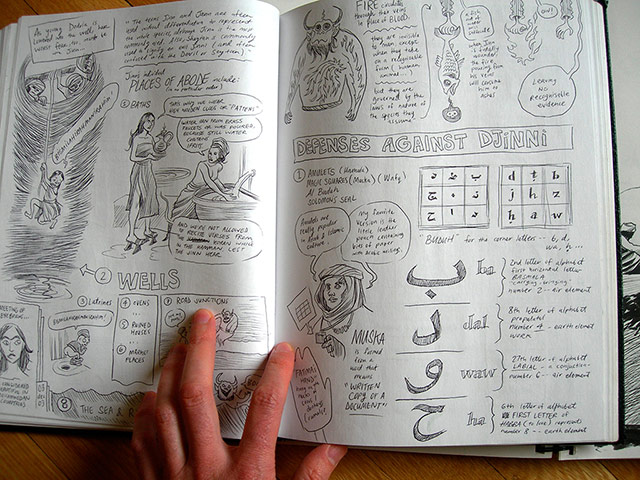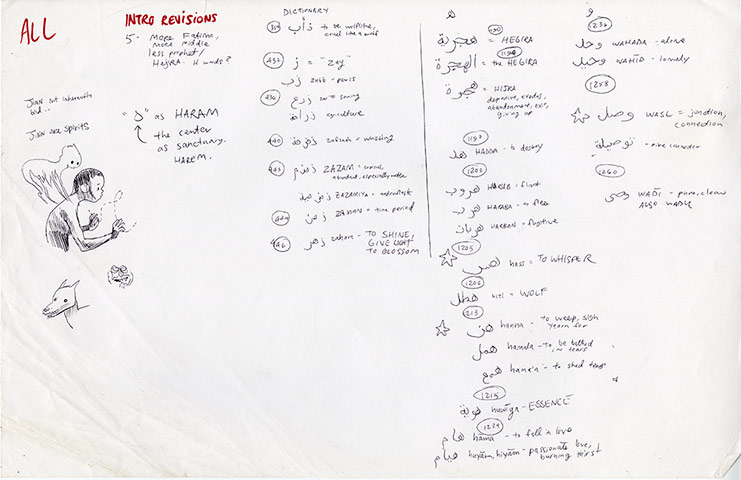The short answer is that as a slightly misanthropic Arabist, I love the way in which the book honors and beautifies the language and the script.
I know that it speaks much to my failings as a lay reader — that is, when I've taken my critic hat off and am simply reading for the pure hedonism of it — and to the one-dimensionality I sometimes inadvertently permit myself that I find the musings about writing to be so tactilely pleasurable that I'm not sure I care about the sexualization of the female character or the orientalization of the made-up kingdom; but that sort of reaction is also the fault (whether you want to understand that as a good or bad thing) of the author/artist. In a way the objectification of the female protagonist within the story is merely an allegory for her objectification in or reduction against the notion of book-as-thing or book-as-art. If the written word is the ultimate art form, then why do we need the three-dimensional beauty of the human form? Look at what man has wrought. Hubris, perhaps, but still... it's there on the page.
Where a certain brand of orientalism does bother me, it is in the idea of a writer copying out words he does not understand: Several published interviews have reported that Thompson learned the Arabic script but nothing else. It is not a problem without historical precedent, though: In the course of my academic work, I have read accounts of eighteenth-century debates at the Spanish Royal Academy of History over whether the inscriptional heritage of the country would be better documented by someone who did or someone who did not read Hebrew or Arabic; they debated whether someone who didn't know what he was looking at would render the inscriptions more faithfully than someone who could read and might then represent what he thought he was recognizing. It also dovetails really beautifully with questions about why Arabic calligraphic decoration is placed so high up in building as to render it illegible, or why it is sometimes rendered as simple squiggles, even for an Arabic-literate population.
The Guardian recently published images from Thompson's sketchbook:


(Click to enlarge; follow the link above for more.)
In a way, these drawings are as evocative to me as a student of Arabic as one of my dissertation texts, in which a Hebrew translator marvels at the strange rules of Arabic grammar. ("Sometimes when we would use the plural, they use the singular feminine," my translator half-marvels and half-complains.) There is a strong kinship among all of us who have struggled to learn the language — and this one is always a struggle. But at the same time, these words are all art for Thompson. He draws Arabic rather than writing it. The book becomes, at once, a glorification of literacy and a total strike against it.
No comments:
Post a Comment